One of our classics is meeting up and hanging out together at SPACE Studies. It allows us to connect not only professionally but also personally with each other. It enables us to highlight our interactions with our environment and share our perceptions. Our lively chat full of laughter yesterday evening ended up being about sharing experiences from our lives when we suddenly remembered the days of the pandemic. Apart from the pandemic’s own shocking effect, it was surprising that it felt like it was a lifetime ago as if it was in another period of life.
This conversation made us remember how much the absence of third places—cafés, parks, and community centres—impacted us. The pandemic dramatically altered our access to third places, those essential social environments beyond home and work. Most of us started working from home, and we literally were left with one place to stay, work, and socialise.
Academically speaking, the absence of these spaces was a stark reminder of their importance. As we navigate a world where the pandemic’s immediate threat has waned, but economic crises persist, we must reflect on what we learned and how we can design more inclusive and accessible third places.
Before we discuss the shock of isolation and the lessons learned, it is essential to remember the theoretical background of the “Third Place” concept.
Ray Oldenburg’s theory is that “third places” are informal public gathering spaces that are accessible, inclusive, and promote social interaction. These places are neutral grounds where individuals from diverse backgrounds can come together, fostering community ties and social capital.
Ray Oldenburg describes the character of the third place in his book “The Great Good Place”, and it can be summarised as;
During lockdowns during the pandemic, the isolation almost all of us felt highlighted how much we rely on third places for social interaction and mental well-being. Although these spaces are physical locations, they are also hubs of community and connection. When we lost our third place, we tried to keep in touch with friends and our social environment via the Internet, knowing that it could never replace the actual connections.
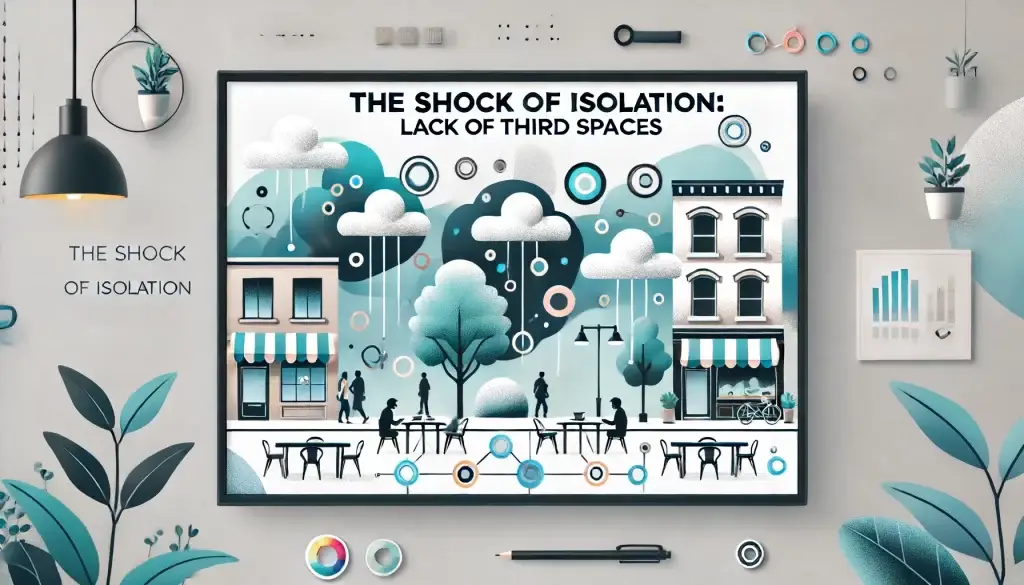
One of the most well-learned lesson is probably to value third places more than ever as their absence made us realise their crucial role in fostering community ties and supporting mental health.
Architects and urban planners are increasingly focusing on creating inclusive and accessible third places. There’s a growing emphasis on designing flexible, multi-use spaces that can adapt to various community needs. This adaptability is crucial in ensuring that third places remain relevant and useful in changing circumstances. Additionally, many research projects were completed during the pandemic about its effects, including “Space in Pandemic: The Use of Indoor & Outdoor Space During the Lockdown in Pandemic,” which was a research project we conducted in collaboration with FMV ISIK University.
Designing third places that are truly inclusive and accessible to all is a key focus. This means considering the needs of people with disabilities, as well as those from different socioeconomic backgrounds. However, the current economic crisis raises essential questions:
Incorporating natural elements into urban spaces has become increasingly important. This includes using plants, water features, and natural materials to create environments that promote relaxation and well-being. Urban green spaces, rooftop gardens, and indoor plants can all contribute to making third places more inviting and health-enhancing.
Engaging local communities in the design process is essential to creating spaces that truly serve their needs. Participatory design approaches ensure that third places reflect the desires and requirements of those who use them most.
Sustainable design practices are integral to the creation of third places. Key considerations include using local materials, reducing environmental impact, and planning for long-term resilience. How can we design third places that are sustainable and adaptable to future challenges?
Given the ongoing economic crises, it’s critical to address the affordability and reach of third places. How can urban planners and designers create spaces that are not only physically accessible but also economically viable for all members of the community? The challenge lies in ensuring that these essential spaces do not become exclusive or unattainable for those most in need.
The pandemic underscored the importance of third places in our lives. As we move forward, it is crucial to incorporate these lessons into urban design practices. By focusing on inclusivity, accessibility, sustainability, and economic viability, we can create vibrant, resilient communities that cherish and utilise their third places. Reflecting on what we have learned and asking the right questions will help us design spaces that are not only functional but also enriching and inclusive for all. That’s why we tried to ask questions instead of searching for their answers. So, we are leaving you with questions asked; let us know if you conducted or are conducting research focusing on these questions. Please leave your comments and share your thoughts and insights.
Dolley, J., & Bosman, C. (2019). Rethinking third places. Edward Elgar Publishing.
Mehta, V., & Bosson, J. K. (2009). Third places and the social life of streets. Environment and Behavior, 42(6), 779–805. https://doi.org/10.1177/0013916509344677
Oldenburg, R., & Brissett, D. (1982). The third place. Qualitative Sociology, 5(4), 265–284. https://doi.org/10.1007/bf00986754
Oldenburg, R. (1999). The great good place: Cafes, Coffee Shops, Bookstores, Bars, Hair Salons, and Other Hangouts at the Heart of a Community. Da Capo Press.
Sign in to continue
Not a member yet? Sign up now

Administrative Assistant
Deniz Bol is the Administrative Assistant at SPACE Studies, where she supports the day-to-day operations and contributes to the smooth functioning of the organization. Alongside her administrative role, Deniz is an artist with a passion for creative expression. She is currently pursuing her studies at the University of the Arts London (UAL), where she continues to develop her artistic practice. Her organizational skills, paired with her artistic background, make her a valuable asset to the SPACE Studies team, helping bridge the worlds of administration and creativity.
E-mail: denizbol@spacestudies.co.uk

Digital Marketing Consultant
Murat Oktay is the Digital Marketing Consultant at SPACE Studies, where he provides strategic guidance to enhance our digital presence and community engagement. With a keen eye for digital marketing trends and best practices, Murat plays a key role in refining our content strategy, expanding our online reach, and connecting with a wider audience. His expertise in digital tools and innovative marketing techniques aligns with SPACE Studies’ mission as a social enterprise, ensuring that our campaigns are impactful and resonate with our commitment to social responsibility in architecture and design. Outside his work with SPACE Studies, Murat stays at the forefront of digital marketing advancements, continually exploring new tools and sharing his insights with peers.
E-mail: muratoktay@spacestudies.co.uk

Marketing Manager
Santa Noella Matabaro is the Marketing Manager of SPACE Studies, bringing her expertise in strategic planning, community engagement, and relationship-building to the organization’s mission as a social enterprise. With a background in Politics & Law from the University of Kent, Santa combines analytical insights with a creative approach to advancing SPACE Studies’ vision of fostering interdisciplinary dialogue in architecture, design, and urban planning. In her role, she develops targeted campaigns and strategic partnerships, building brand presence and fostering meaningful connections with the community. Santa’s collaborative and people-centered approach enhances SPACE Studies’ impact, aligning with its commitment to social responsibility and innovation in the built environment.

Academic Content Coordinator
Betul Uckan is an architect and dedicated academic with a background in both architectural practice and research. She holds a Master of Science in Architectural Design and a Bachelor’s degree in Architecture from Istanbul Technical University, where she cultivated her interests in architectural theory and design. Betul has gained experience as a research assistant in various universities, contributing to design studios and foundational courses. She has also worked in the field as an architect with projects focused on design, modeling, and construction, and has been involved in notable projects, including Maltepe Piazza and Emaar Square in Istanbul. With her expertise spanning both digital and material architecture, Betul brings a dynamic, interdisciplinary approach to her role as the Academic Programme Coordinator.
E-mail: betuluckan@spacestudies.co.uk
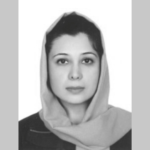
Senior Researcher & Managing Editor
Arghavan Pournaderi is a senior researcher in the field of architectural conservation and restoration, with an academic foundation in architecture and specialized expertise in historic sites and buildings. Completing her PhD at the Art University of Isfahan, Iran, in 2019, her research has contributed to the understanding of Iran’s architectural heritage, with a focus on Isfahan’s urban and architectural evolution during the Safavid period. In addition to her extensive research, Dr. Pournaderi has held academic positions at various institutions in Isfahan, teaching at both undergraduate and graduate levels. Her work extends beyond academia as she contributes to SPACE Studies as Senior Researcher & Managing Editor, where she oversees scholarly initiatives that foster deeper interdisciplinary dialogue in architecture and heritage conservation.

Senior Researcher & Educational Consultant
Gregory Cowan is a Senior Researcher and Educational Consultant at SPACE Studies, where he leads initiatives that bridge academic research and practical application in architecture and urban design. He contributes his extensive experience to mentoring postgraduate students, designing educational workshops, and guiding community-focused projects. Gregory is also a freelance academic at the University of Wales Trinity St David and the University of Westminster, and founder of The Architects Coach. His expertise spans architectural workspace analysis, professional development, and positive intelligence coaching.
E-mail: gregorycowan@spacestudies.co.uk

Senior Researcher
Alison Hand is a Senior Researcher at SPACE Studies. She is a painter and writer with an MA in Painting from the Royal College of Art. Alison’s work focuses on creating absurd, unstable heterotopic spaces and dialogues with painting history. She is currently the Artist in Residence for King’s College London Philosophy Department on the Dreams and Wakeful Consciousness Research Project, exploring themes of time and simultaneity in new work. Alison has received numerous awards for her painting and is currently working with Bloomsbury Publishers on a major essay on Drawing in Contemporary Art. She is also the BA Fine Art Programme Leader at Art Academy London and co-director of Cement Arts. Her role at SPACE Studies involves leading research projects, mentoring junior researchers, and contributing to our artistic and academic initiatives.
E-mail: alisonhand@spacestudies.co.uk
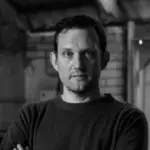
Senior Researcher
Julian Wild is a Senior Researcher at SPACE Studies and the Sculpture Program Leader at The Art Academy London. With over 30 years of experience in creating and exhibiting sculptures, Julian has worked with high-profile clients such as Cate Blanchett and the University of Oxford. A fellow and former vice president (2015-2019) of the Royal Society of Sculptors, his work has been featured at venues like Modern Art Oxford and Chatsworth House. At SPACE Studies, Julian leads research projects, mentors junior team members, and conducts workshops that blend art and urban studies. In his free time, he enjoys attending academic conferences and crafting new sculptures.
E-mail: julianwild@spacestudies.co.uk
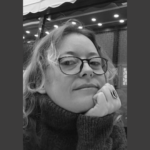
Director of Publications & Senior Researcher
Elif Suyuk Makakli (Associative Professor) earned her PhD in Architecture from the Vienna University of Technology, where she studied the impact of technology on architecture under Prof. William Alsop. With extensive experience in architectural practice in Istanbul and Vienna, she is now an Associate Professor at FMV Isik University, focusing on design education and technology. At SPACE Studies, Elif serves as both the Head of Publications and Senior Researcher, guiding scholarly content and contributing to research initiatives. She is dedicated to mentoring and fostering design innovation.
E-mail: elifsmakakli@spacestudies.co.uk

Director of Research
Sanaz Shobeiri is an architect, urban designer, and landscape urbanist, currently a postdoctoral researcher in the Department of Planning at Queen’s University Belfast. Her research focuses on age-gender inclusiveness and the interplay of architectural, historical, political, and sociocultural dimensions in urban spaces, exemplified by her project on city centres in Belfast and Tehran. Sanaz holds a PhD in Urban Planning from the University of Tehran and has a robust portfolio in sustainability and urban theory. As Head of Research at SPACE Studies, she leads innovative research initiatives, fostering collaboration and academic excellence. In her free time, Sanaz enjoys exploring urban landscapes and supporting community development.
E-mail: sanazshobeiri@spacestudies.co.uk

Creative Director
Selin Gulce Sozmen is the Creative Director at SPACE Studies, where she leads the artistic vision and design strategy for the organisation. With a background in graphic design and visual arts, Selin has been instrumental in creating visually captivating books, journals, and event posters. Her role extends to developing and coordinating workshops and creative projects, ensuring that all visual materials meet the highest standards of quality and innovation. Selin’s dedication to creativity and excellence drives the visual and creative direction of SPACE Studies, making her an essential part of the team.
E-mail: selinsozmen@spacestudies.co.uk
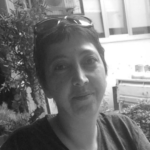
Founder & Executive Director
Pinar Engincan is the Founder and Executive Director of SPACE Studies, an innovative social enterprise focused on fostering interdisciplinary dialogue and education in architecture and urban design. With extensive experience as a lecturer and researcher, Pınar holds a PhD in Architecture and has led numerous academic initiatives. Her career includes curriculum development, international collaborations, and research on housing and urban policies. Passionate about bridging academia and community, she champions accessible education and consultancy services, empowering individuals to shape the built environment.
E-mail: pengincan@spacestudies.co.uk